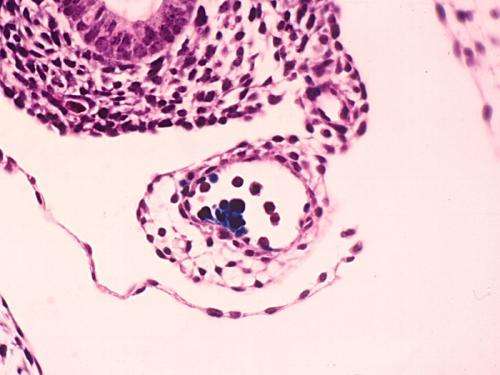Hundreds of genetic mutations found in healthy blood of a supercentenarian

Genetic mutations are commonly studied because of links to diseases such as cancer; however, little is known about mutations occurring in healthy individuals. In a study published online in Genome Research, researchers detected over 400 mutations in healthy blood cells of a 115-year-old woman, suggesting that lesions at these sites are largely harmless over the course of a lifetime.
Our blood is continually replenished by hematopoietic stem cells that reside in the bone marrow and divide to generate different types of blood cells, including white blood cells. Cell division, however, is error-prone, and more frequently dividing cells, including the blood, are more likely to accumulate genetic mutations. Hundreds of mutations have been found in patients with blood cancers such as acute myeloid leukemia (AML), but it is unclear whether healthy white blood cells also harbor mutations.
In this new study, the authors used whole genome sequencing of white blood cells from a supercentenarian woman to determine if, over a long lifetime, mutations accumulate in healthy white blood cells. The scientists identified over 400 mutations in the white blood cells that were not found in her brain, which rarely undergoes cell division after birth. These mutations, known as somatic mutations because they are not passed on to offspring, appear to be tolerated by the body and do not lead to disease. The mutations reside primarily in non-coding regions of the genome not previously associated with disease, and include sites that are especially mutation-prone such as methylated cytosine DNA bases and solvent-accessible stretches of DNA.
By examining the fraction of the white blood cells containing the mutations, the authors made a major discovery that may hint at the limits of human longevity. "To our great surprise we found that, at the time of her death, the peripheral blood was derived from only two active hematopoietic stem cells (in contrast to an estimated 1,300 simultaneously active stem cells), which were related to each other," said lead author of the study, Dr. Henne Holstege.
The authors also examined the length of the telomeres, or repetitive sequences at the ends of chromosomes that protects them from degradation. After birth, telomeres progressively shorten with each cell division. The white blood cell telomeres were extremely short
More information: Holstege H, Pfeiffer W, Sie D, Hulsman M, Nicholas TJ, Lee CC, Ross T, Lin J, Miller MA, Ylstra B, Meijers-Heijboer H, Brugman MH, Staal FJT, Holstege G, Reinders MJT, Harkins TT, Levy S, Sistermans EA. 2014. Somatic mutations found in the healthy blood compartment of a 115-year-old woman demonstrate oligoclonal hematopoiesis. Genome Res doi: 10.1101/gr.162131.113















